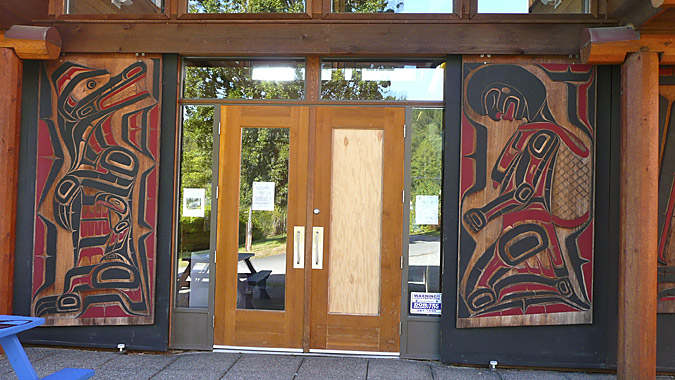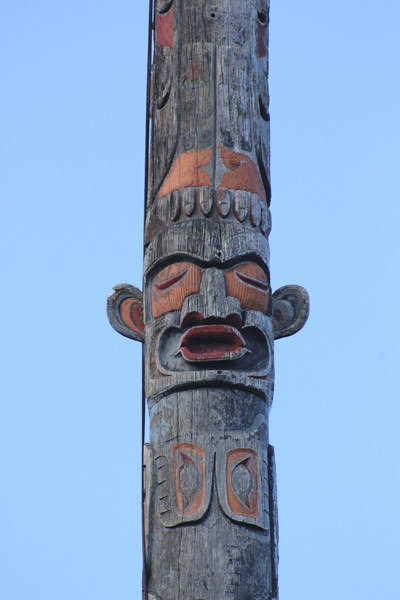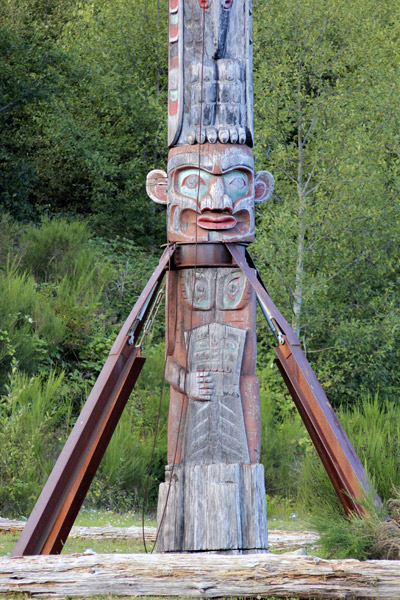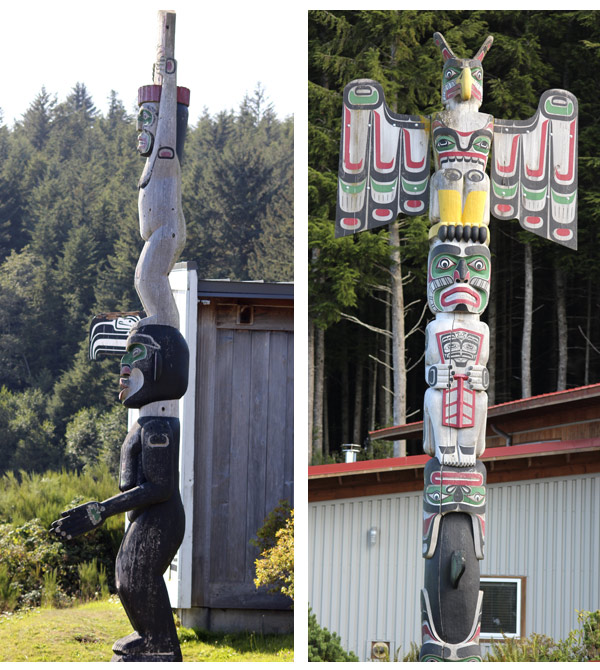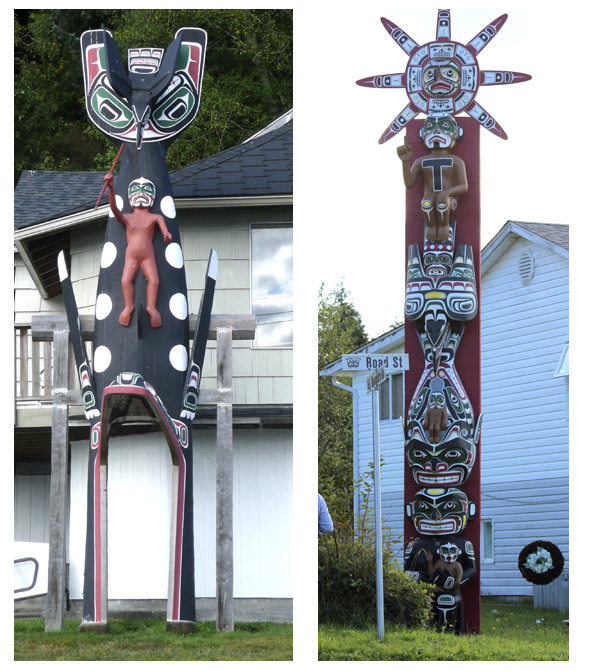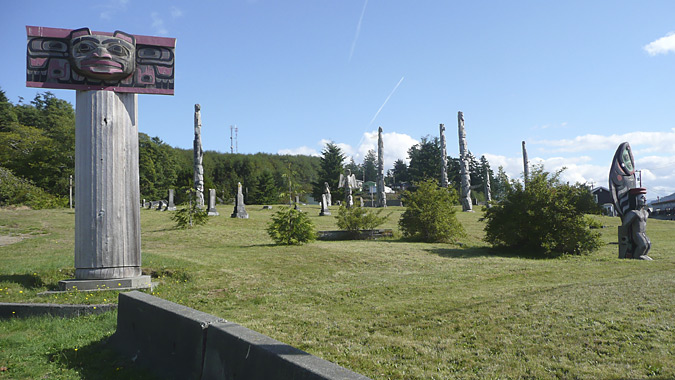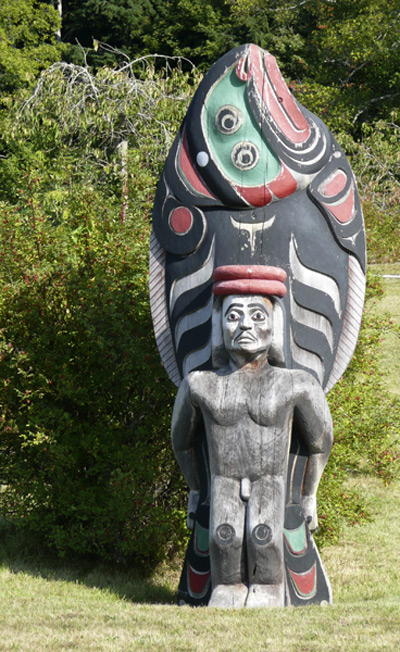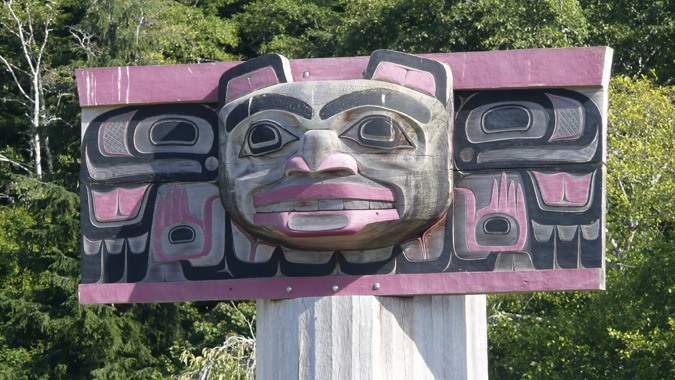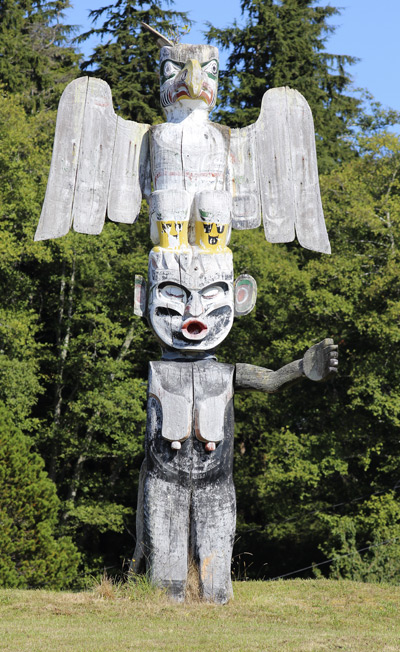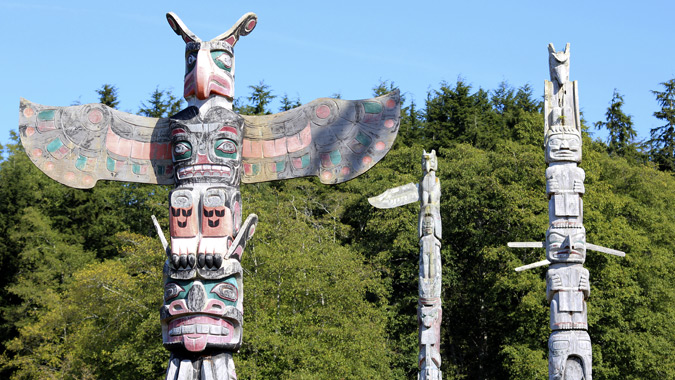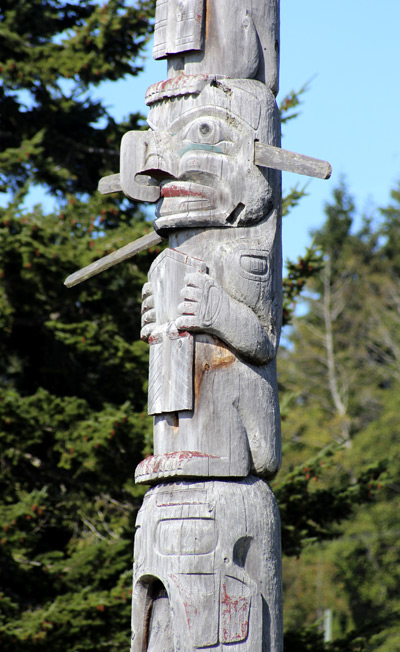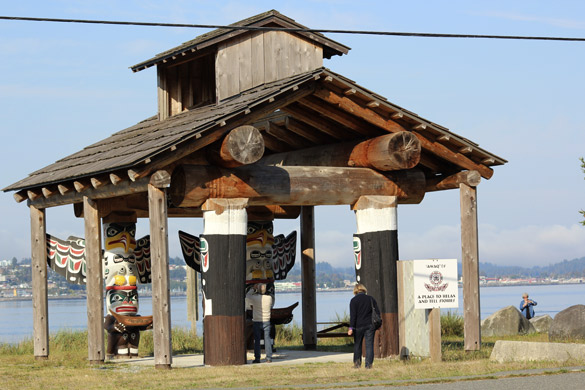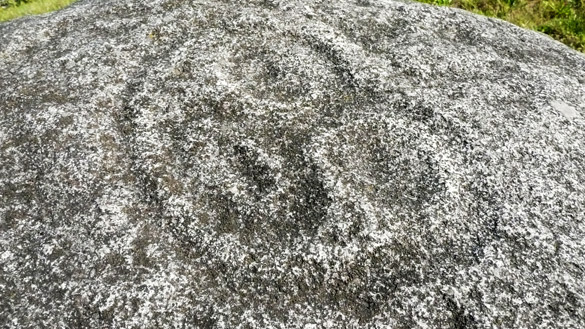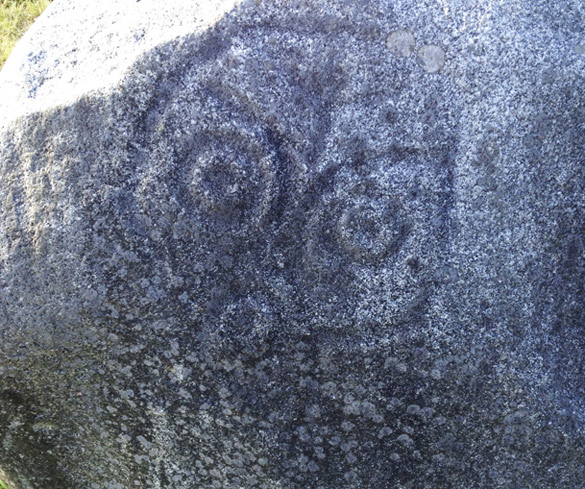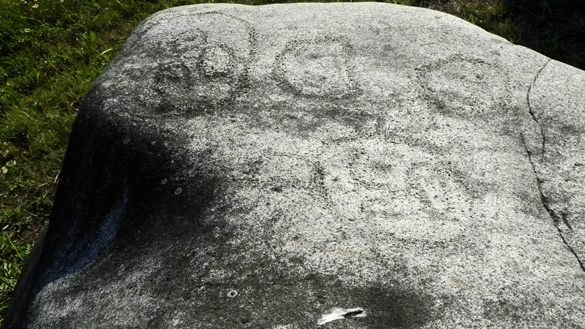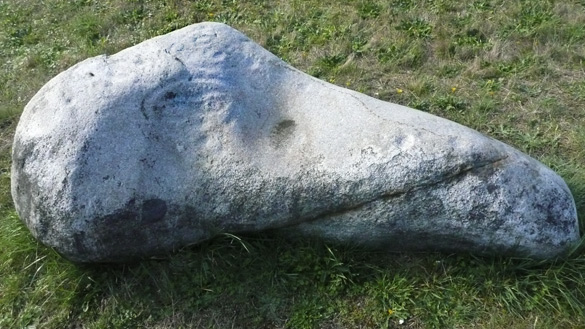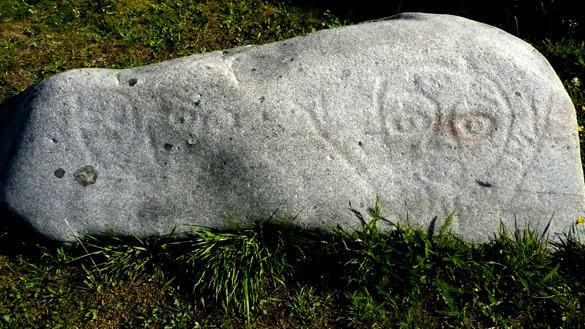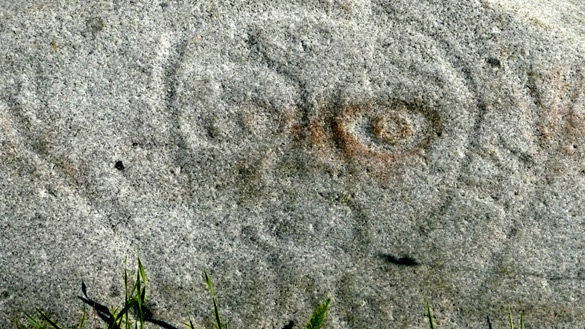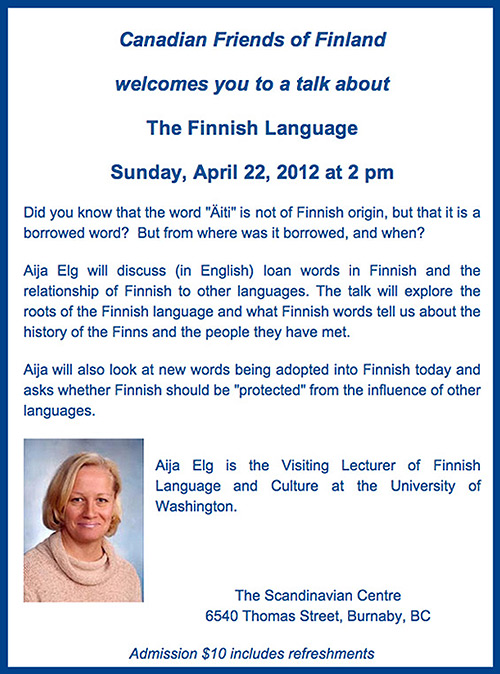Alert Bay history
‘Namgis Bighouse, next to the world’s tallest totem pole
the front doors of the U’Mista Cultural Centre
As I mentioned in my first Alert Bay post, we learned, unfortunately for us, that the U’Mista Cultural Centre was closed for two reasons, one that it was now on the fall/winter schedule with a Monday closing, and secondly and more seriously because of a recent fire.
In our wanderings around the village, we came upon U’Mista with its stunning doorside panels. I’m sorry I did not get a good picture of the larger structure. Unable to go inside, I thus want to point out their excellent website which I’ve been studying several times. For starters, the meaning of U’Mista is enlightening:
In earlier days, people were sometimes taken captive by raiding parties. When they returned to their homes, either through payment of ransom or by a raid, they were said to have u’mista. The return of our treasures from distant museums is a form of u’mista.
Do have a look at the gorgeous masks in the collection.
I’m grateful for websites like this and that we had managed a visit to Quadra Island’s Nuyumbalees Cultural Centre with its similar masks and other works, their stories and their sad history with the arrival of the Europeans.
Here’s more about that history.

